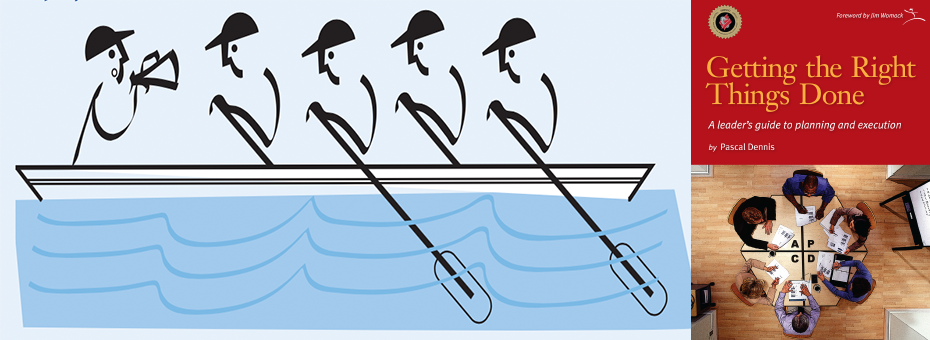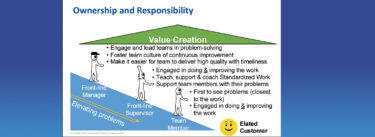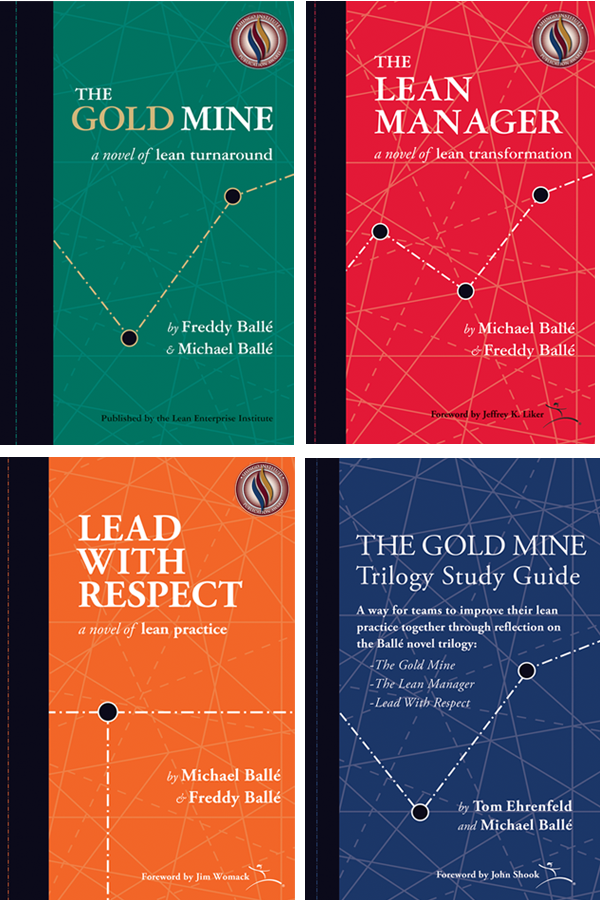Yesterday’s Post explained why Pascal Dennis’s Getting the Right Things Done helps you choose and then execute on the key strategic priorities for your organization. Today’s Post will help you maximize your experience with hoshin kanri by sharing critical context about its development. These articles are part of our monthly series highlighting LEI books. You can download excerpts and helpful forms from the book here.
Why is the way we plan and execute so screwed up—and how do we fix it?
At the dawn of the 20th century, an American named Frederick Taylor applied the scientific method to the chaotic world of work. By formally studying routine jobs—shoveling coal, for example—Taylor vastly improved the efficiency and quality of manual work. He proposed that, by careful observation, the “one best way” could be found for such work. Taylor thereby invented industrial engineering and laid the foundation for the mass-production system.
A humble emphasis on basing knowledge and action on rigorous study of the work itself forms a lasting foundational belief of lean.
Half a century later, post-World War II academic theorists posited that if Taylor’s methods work on the factory floor, they would work in the executive suite, too. These academics were especially interested in planning and execution. They believed that if they could find the “one best way” to plan and execute, senior management could coordinate the big picture; much like a chess player coordinates the pieces on a chessboard.
A bold idea, to be sure, and the academics ran with it. They produced a series of planning models whose complexity was overwhelming.
But the academics missed Taylor’s fundamental message: before you can standardize a process, you have to understand it. To develop standardized work for a factory process, for example, you have to go see and grasp its elements and their sequence, duration, and spatial arrangement.
This humble emphasis on basing knowledge and action on rigorous study of the work itself forms a lasting foundational belief of lean, an approach that informs decision-making regarding matters large and small. By contrast, the “Planning School” models tell you everything—except how to develop a strategy.
Detachment is a core planning school assumption; the idea that we benefit by abstracting management from day-to-day operations. But strategic plans developed at central command are often divorced from reality. Detachment creates an overreliance on “hard” data, which often means that financial data crowds out everything else.
Include Both Analysis and Intution When Creating Your Strategy
Conventional planning is all analysis (left brain). But the essence of strategy is not analysis—it’s the synthesis of analysis and intuition.
Intuition helps us answer questions like: What is the mood in the plant? What did the look on the supplier’s face mean? How are we viewed in the market relative to our competitors? Thus, strategy engages both the left and the right (creative) brain. The result is a compelling narrative, a story. We need to be able to tell persuasive stories—to our managers and team members, to our customers and suppliers, to our development partners, and to the investment community.
The command-and-control school that reached its zenith between 1960 and 1990 seeks, at root, to turn people into predictable automata. It’s a loser’s game. Even totalitarian states fail in the end, despite overwhelming propaganda and coercion.
Human beings are simply too complex, idiosyncratic, and cranky. Command–and–control debases our team members. They lose part of their humanity. We lose their knowledge, experience, and creativity. Half a century ago, Taiichi Ohno, founder of the Toyota Production System, saw the same sad waste on the Toyota shop floor. “What a terrible waste of humanity,” he said.
While the planning school has been discredited, its legacy lingers in the dysfunctional mental models of our supervisors, managers, and executives.
Build on the Work of Drucker and Juran
Peter Drucker and Joseph Juran were beacons of clarity during the planning school’s heyday. Strategy deployment is built on the foundation laid by Drucker’s The Practice of Management and Juran’s Managerial Breakthrough. Drucker posed critical questions in an accessible way:
- What should a company’s overall objectives be?
- What should a manager’s objectives be?
- How do we create objectives?
- How do we control (check) results against our objectives?
- How do we manage by objectives, instead of by exhortation?
Drucker’s answers created the practical planning system called Management by Objectives (MBO), whose innovations were many:
- Objectives form a hierarchy (tree).
- We must align objectives level by level.
- A company’s objectives must be balanced; profit alone is an inadequate metric.
- There should be an annual planning cycle during which actual results and objectives can be compared.
Juran called his system Strategic Quality Planning and it entailed the deployment of objectives and policies. Juran’s innovations included:
- Setting broad quality goals by senior management,
- Deploying quality goals and policies level by level,
- Cross-functionality through “quality committees” (to erode silos),
- Annual planning cycle based on the PDCA cycle,
- Assessment of end-of-pipe and process measures,
- Problem-solving using the scientific method, and
- Involvement through shopfloor quality circles.
Drucker and Juran greatly influenced Japanese corporations who hungrily absorbed and refined their ideas. The term hoshin kanri was first used by Bridgestone Tire in 1964. Around the same time, Masao Nemoto began to develop Toyota’s annual planning and execution system.
Frame Your Strategy Deployment As A Journey
Strategy deployment seeks to answer the critical strategic planning questions in simple, compelling ways:
- Who are we?
- Where are we going?
- How do we get there?
View your planning process as collectively creating a story.
Framing this as a journey is a useful metaphor. Our current-state value-stream map represents where we are, and our future-state map indicates where we want to go. The “kaizen bursts” on our current-state map are analogous to boulders (e.g., major flow or capability problems that we need to fix). The small stones are the day-to-day management issues that we need to solve.
Strategy deployment provides a broad umbrella structure that allows the Plan-Do-Check-Adjust cycle—the scientific method—to flourish. It seeks to balance the benefits of centralized control with the need for autonomy and initiative. Strategy deployment provides for “bottom-up” involvement, tapping into a vast knowledge reservoir and diluting the Dilbert effect. Why shouldn’t work be fun? How does strategy deployment fit into the lean production system?
Think of it as the brain and nervous system.
Brain:
- Tells interesting stories.
- Applies scientific method (PDCA).
- Reflects and learns.
- Nervous System:
- Aligns activity.
- Connects everything.
- Responds quickly.
Through strategy deployment we seek to achieve:
- Focus—What are our critical few goals?
- Alignment—How do we get all the players on the same page (literally)?
- Quick response—How do we make problems visible to everyone so that we can respond quickly?
We don’t want robots, moving in lock step. We want human beings, in all their creative cranky and eccentric glory, moving in the same direction, pulled by a shared vision.
Hoshin Kanri
Aligning and Executing on Your Organizational Objectives.





